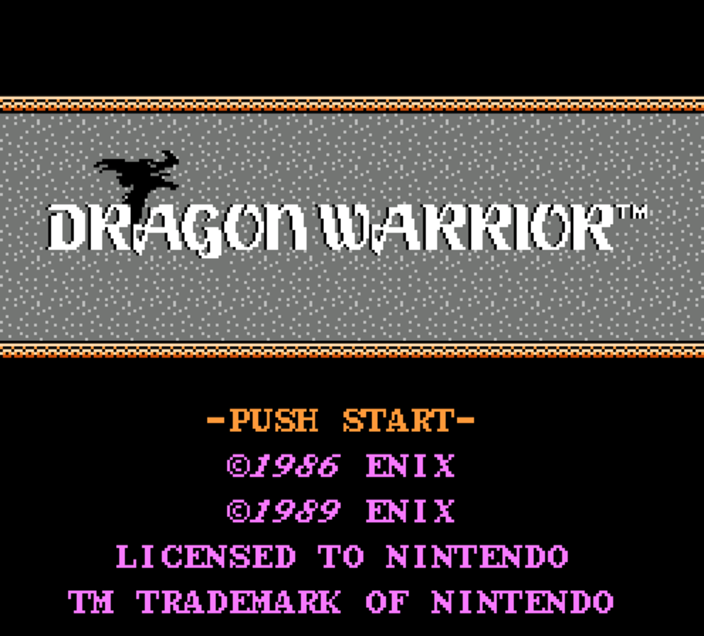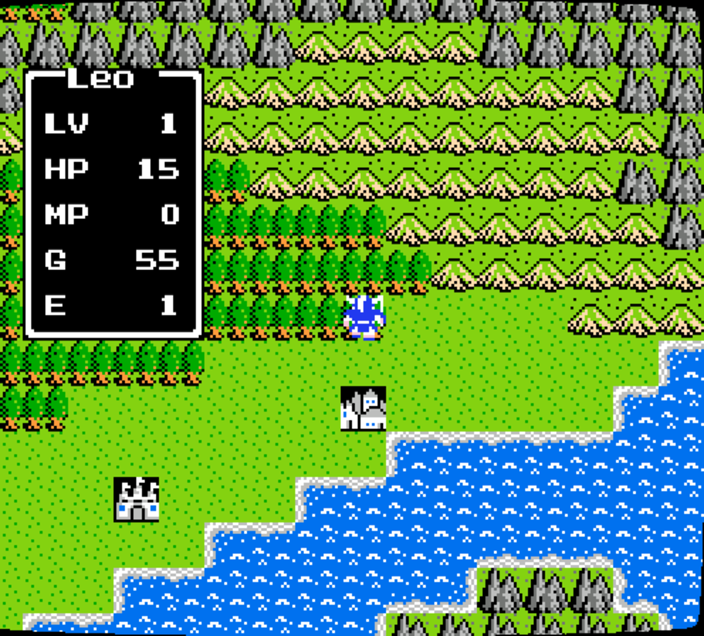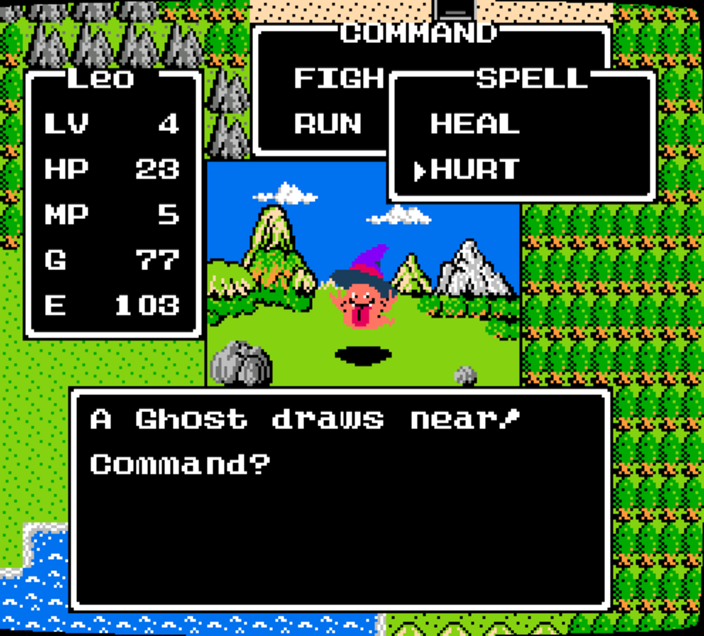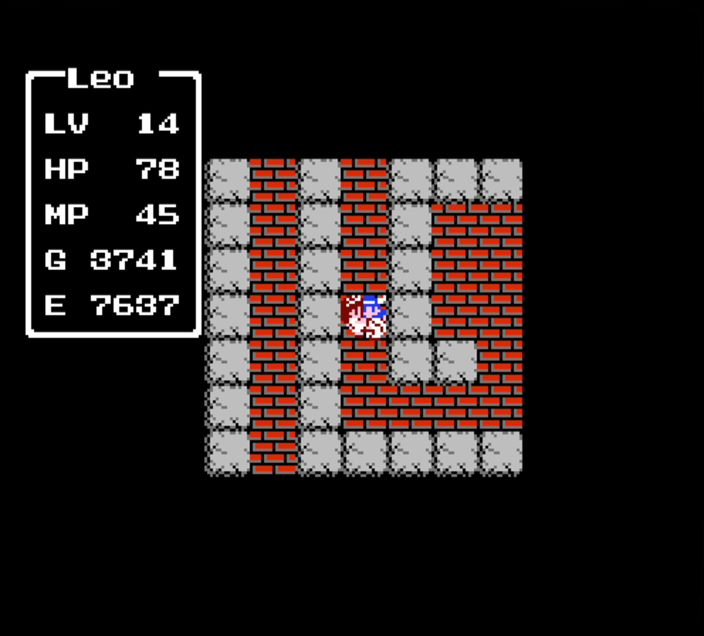Have you played...? Dragon Quest
I actually played this in February, but only got around to writing a review now.
I like old-school JRPGs. There’s something about their simplicity, straightforwardness and honesty that I enjoy, despite their often repetitive and grindy nature and very simplistic, often irrelevant plots. I think that simplicity reminds me of simpler times 😂 and that’s of course linked to nostalgia.
As I mentioned in the last post, Phantasy Star for the Sega Master System is a game that’s close to my heart. About 15 years ago, during college, I played and finished the original Final Fantasy for the NES. A few months ago, I also played the first SaGa game for the Game Boy. After going through all these classics, I also wanted to experience the original Dragon Quest (known as Dragon Warrior in the US), the first entry in one of the most iconic and influential RPG franchises in Japan.
Here are my impressions.
Humble beginnings
Dragon Quest was developed by Enix (now Square Enix) and released in 1986 in Japan, making it one of the earliest RPGs for the Famicom. It even predates Final Fantasy, which came out the following year in 1987.
The plot is incredibly basic: you’re a lone warrior sent by the king to save the land from the Dragonlord, who’s spreading terror across the realm. You can also save the princess, but that’s actually not mandatory to complete the game. You go on that adventure alone - there are no party members, it’s just you against the world. On the other hand, enemies never appear in groups either, battles are always one-on-one.
Endless grinding
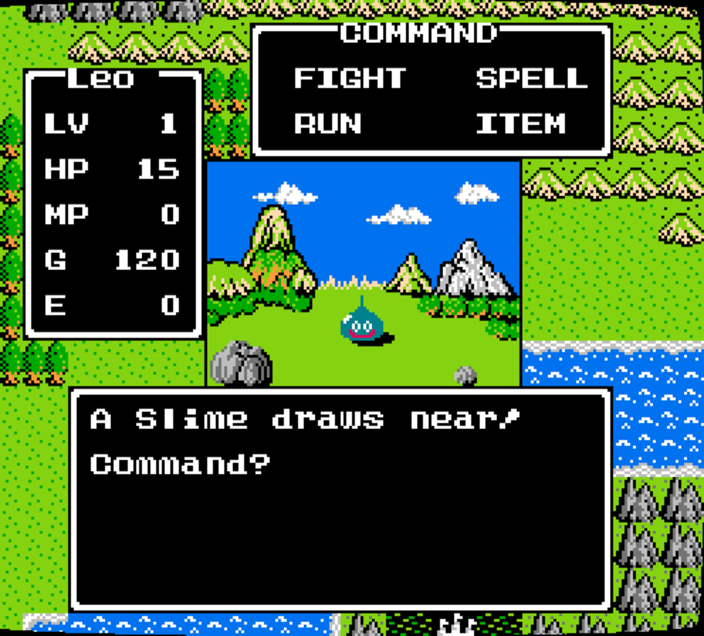
Like every other JRPG, you get into (lots of) random battles, both in the overworld and in dungeons. To progress, you’ll grind your way through hundreds of enemies, earning experience points and gold to buy better gear. Then you go to the next town, where the equipment is stronger (and more expensive), but so are the monsters. So you kill more monsters, get stronger, earn more gold to buy better gear, go to the next town, rinse and repeat.
Gameplay is very basic and repetitive. Battles don’t offer much in terms of strategy beyond the occasional healing spell or casting sleep to try to incapacitate an enemy for some turns.
Battle graphics are charming for their time, showing a nice and cute sprite of the enemy front and center during fights. I think the monsters’ graphics are visually the best part of the game, with art by Akira Toriyama (widely famous for the Dragon Ball series). There are no battle animations though, only flashing to show hits and attacks. There’s also a lot of palette swaps for different enemies, but that’s forgivable given the game’s age.
Outside battles, the visuals are simpler. The world map, towns, dungeons, NPCs, etc. are very basic. They have enough detail to represent what they are, but aren’t very impressive or memorable. Music is also similarly ok, not great. The battle music (which you’ll hear a lot) is a little weird and gritting, but the other themes are alright. A high note is the iconic Dragon Quest overture makes its debut on the title screen:
Old-school pacing
I feel one of the biggest issues with this game is how grindy it is. In the final sections of the game, I even did something I don’t like to do: I used the emulator’s fast-forward feature to spped up the grinding. It just got very repetitive at the end, when I just needed a few more levels to be able to defeat the final boss. Even so, the overall playthrough wasn’t too long, I think it took me around 10 hours, give or take.
The game shows its age (and its early computer RPG roots) through some of its mechanics. You have to select a menu option just to open doors (which consume keys, by the way, so you need to buy those), or even to go up and down stairs. Most dungeons are dark and you need a torch or light spells to see where you’re going. These quirks have long since been streamlined or removed in newer JRPGs. Modern games, like Sea of Stars for example, often skip the grinding entirely and still manage to offer a good challenge, with much smoother pacing.
That said, when it comes to playing older games (or appreciating anything from a different era for that matter) I strongly believe it’s important to consider their historical, technological and cultural context. That perspective helps you appreciate them fully, despite their flaws and limitations.
Final thoughts
I’d give Dragon Quest a 5.5 out of 10: it’s far from being the best NES RPG or even the best entry in the Dragon Quest series. And to be honest, it’s not a particularly engaging game by today’s standards: the gameplay is very grindy, mechanics are simple, and there’s almost no narrative or strategic depth.
I’d only recommend it if you are a hardcore JRPG fan who doesn’t mind grinding and repetition, or if you’re curious to experience the humble beginnings of one of the most beloved JRPG franchises of all time.
Still, I’m glad I played it. While it hasn’t aged that well, Dragon Quest helped define an entire genre, and that alone makes it worth acknowledging.
Extra
There are some impressive speedruns where people manipulate the game’s RNG (random number generator) through very precise inputs in order to finish the game super quickly. I think they’re very entertaining to watch. Here’s one from AGDQ 2018, where the game was beaten in 27 minutes: (for comparison, I took around 10 hours)
Details
- Name: Dragon Quest (Dragon Warrior in the west)
- Genre: JRPG
- Developer: Enix
- Year: 1986 (Japan), 1989 (US)
Post revised with ChatGPT
